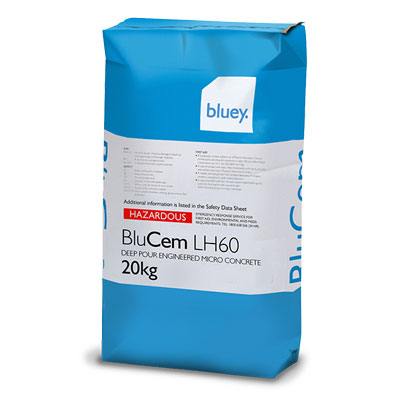It's no surprise to construction professionals that cement and grout products shrink as they are curing and mixed with water. In a process similar to baking a cake, where the flour reacts with the water, there can be some expansion and shrinkage. Additionally, in both cases, you get volumetric change as air bubbles are formed and other reactions occur within the mixture.
However, it is important to add that you can manage this expansion and contraction in a way that will keep it the most volumetrically stable – which is exactly what you are looking for when it comes to grouts and concretes.
Highlighting industry reporting
A lot of companies that offer similar products to Bluey will market their products as being non-shrink. This isn't completely true. Each cementitious grout shrinks or expands, but what every manufacturer or supplier does is add additives which compensate for this shrinkage and expansion at different stages.
For example, if you know that shrinkage will occur between one and three days, you may add a chemical such as an aluminium powder to ensure expansion at that point. This will then create air bubbles and hydrogen which expand and compensate for the shrinkage. However, this may not be possible where hydrogen embrittlement is a risk so other mechanisms may be employed.
In addition, as the moisture in the grout begins to dry out between the seven and 28 day point, you'll put additives that form crystalline growth to ensure the grout doesn't crack.
The real issue when it comes to claiming a non-shrink product is that there is a lot of different testing that can be done.
Testing in the right conditions
This highlights the need for construction professionals to work with a company that is open about its processes and tests products based on what the conditions are going to be like in the open environment.
For example, there is no point testing your grout in a water bath, if it is going to be used in a particularly dry location. Likewise, applying a dry curing grout to an environment where it will be fully submerged underwater isn't recommended.
Thermal shrinkage
Another big topic that often is missed in the world of grout is the thermal shrinkage. A lot of professionals will test samples that are very small and as a result, don't offer a great amount of heat when they are curing.
A relevant situation is if a contractor is pouring a concrete beam or grout slab more than 100mm thick. As the grout is curing, it will ultimately get hot and the higher the cementitious content, the more heat the product will emit.
Essentially, the more strength the grout develops in the first three to seven days, the hotter the product is going to get during curing.
In some cases, grouts have been observed to rise in temperature to above 100 degrees. Then, over the coming days as the grout sets and hardens, it begins to cool down and shrink. Potentially, a concrete section that is 10 metres long could shrink as much as 30-40mm.
The best of both worlds can be achieved when a low-shrinkage cement system is combined with the right shrinkage-compensating additives and is also designed to generate low heat when curing. The BluCem LH60 is a grout product designed with all these features.
Users clearly need to be mindful of the environment when making decisions about the grout you are selecting. The helpful team at Bluey will be able to provide in-depth information and solutions for all grout-related applications.

